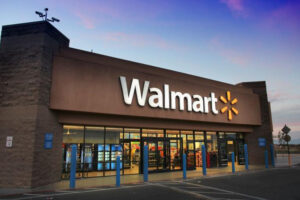The key uses of AI in retail may surprise you
If you’re hearing a lot of chatter about artificial intelligence in your local coworking space, gym, or bar this week, it’s probably in the context of conversational chatbot ChatGPT.
But asking the very impressive conversational AI to write a breakup text—while admittedly amusing—is far from the only (or best) use of artificial intelligence. In fact, when you’re in a grocery store, online shopping, or at the mall, you’re probably surrounded by AI without even realizing it.
While there’s still plenty of room for growth and improvement in artificial intelligence overall, it’s already proving its value in key everyday retail use cases.
Customer service
The Precedence study also found that customer relationship management is one of the top use cases for AI in retail, making up 21.5% of overall market share in 2022.
That includes things like customer service chatbots, which can either connect customers to support teams or respond to questions in real time. Brands from Sephora to Taco Bell have been experimenting with AI in customer service for quite some time, including through Facebook Messenger assistants, shopping concierges, and WhatsApp chatbots.
Overall, artificial intelligence in customer service offerings can help retailers cut down on labor costs, and increase consumer satisfaction by decreasing wait times and providing constant availability.
Product recommendations
Recommendation AI is another key investment for the retail world. We’re talking personalized product recommendations at scale, based on everything from browsing and shopping history to chatbot interactions.
This is a particularly interesting use case for AI because it means retailers can start to connect shoppers with the items they’re looking for earlier on in their online shopping sessions. Recommendation AI can also expand to include both visual and voice search, and retailers have experimented with both.
A great example of a retailer using AI to create product recommendations is Sephora’s Color IQ technology, which pulls from a dataset of thousands of skin tones to help shoppers and store workers identify the correct shade for a customer.
On the apparel side of things, there’s Levi’s Virtual Stylist, offering AI-powered fashion advice via a chatbot.
Inventory management
Inventory management in particular is an area of retail where many different types of AI are already being used. There’s camera vision, (like Google’s new shelf-checker tool), but there’s also sensors (smart shelves, anyone?) and demand forecasting. There’s plenty of room in this last use case for AI to make a big difference: According to McKinsey & Co., using AI-powered forecasts in supply-chain management can reduce errors by up to 50%, reducing lost sales and product unavailability by up to 65%.
Lowe’s is one retailer that has gone all in on AI for inventory management, introducing a “LoweBot” to Bay Area stores in 2016. LoweBot uses cameras and sensors as it moves around a store, helping direct customers to specific items and monitoring inventory, flagging low-stock or out-of-stock items.
Loss prevention
Last, but certainly not least, is loss prevention. The 2022 National Retail Security Survey, conducted by the National Retail Federation, found that retail shrinkage (when fewer items are in stock than inventory reflects) costs the industry $100 billion annually.
That same study also revealed that retailers are increasing their investment in loss-prevention technology.
Source: Retail Brew




